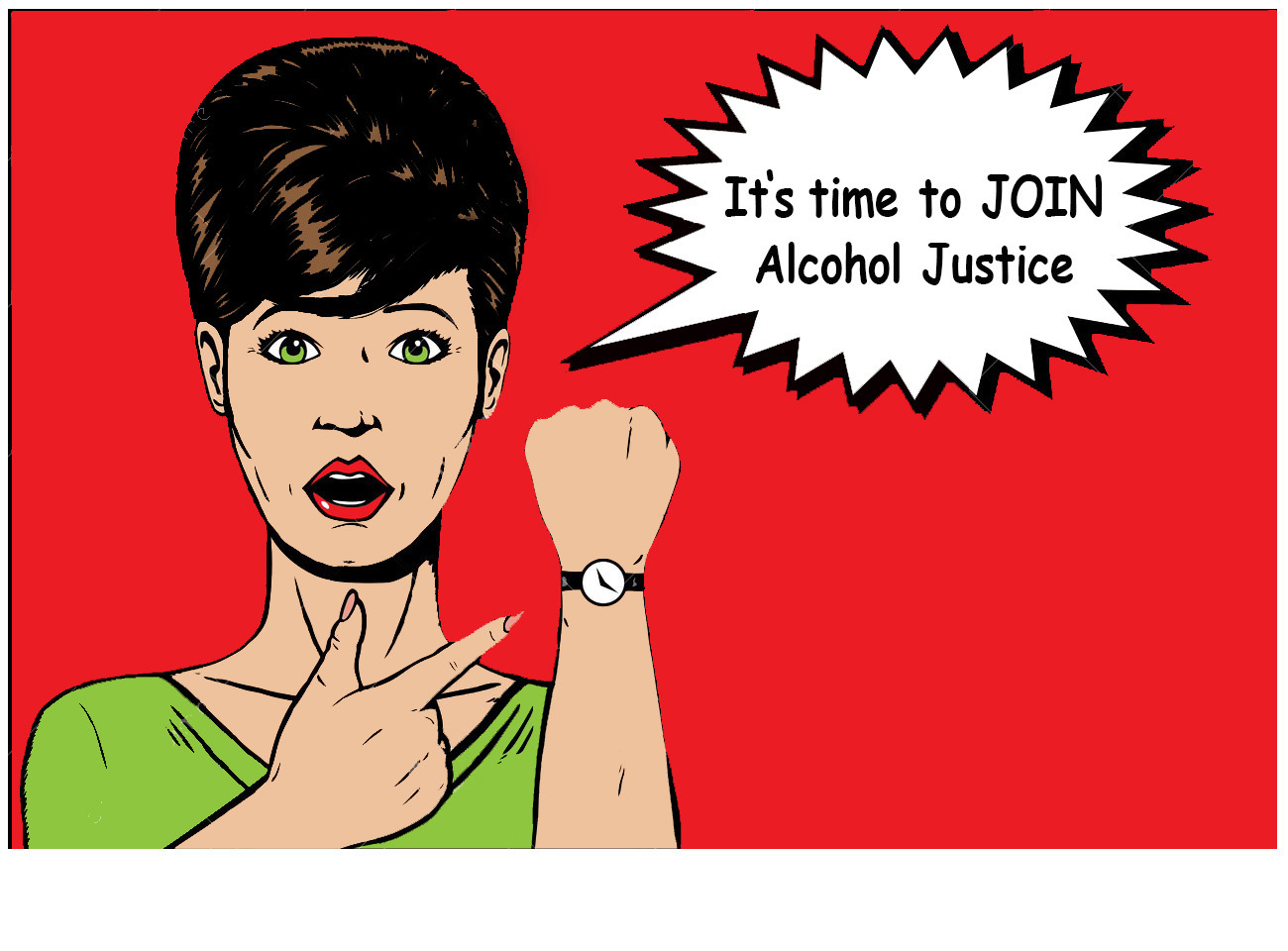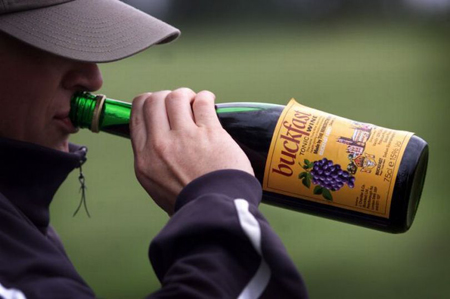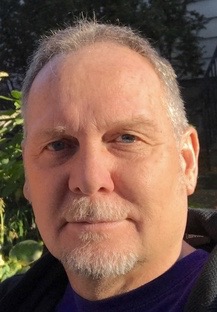Blog
A Personal Message from Alcohol Justice's Bruce Livingston

Dear Friends,
I've got two teenage boys, and I'm fighting Big Alcohol to protect them and all youth from the annual US catastrophe of over 88,000 alcohol-related deaths, and $250 billion in alcohol-related harm.
Everybody knows somebody whose life had been interrupted or ended by an alcohol-related cause.
At Alcohol Justice we fight for the victims and the survivors and most of all for prevention, but we need your participation to protect our families and communities.
In 2017, Alcohol Justice celebrated 30 years of fighting Big Alcohol and reducing alcohol-related harm.
Truth be told, it's really hard work and we don't always win.
But in 2017, we fought hard and won some major battles:
- We led a successful campaign to STOP a dangerous policy change that would have allowed alcohol sales until 4 a.m. at California bars, restaurants, and clubs (unfortunately it will be re-introduced in 2018)
- We successfully concluded a
four-year long campaign to close the exploitative Whiteclay liquor stores that caused generations of harm to the Oglala Lakota Native Americans of Pine Ridge Reservation - We helped to pass a bill that for the first time requires Responsible Beverage Service training for alcohol servers throughout California
Today I invite you to become a member and join these efforts in 2018.
Become a member, and when you do, I promise to involve you in important battles that can help save the lives of those you love.
From my family to yours, Happy Holidays!
Bruce Lee Livingston
Executive Director/CEO Alcohol Justice
Wyoming Leg Ponders Charge for Harm
With a bold plan to use alcohol taxes to fund recovery, the Cowboy State wears a white hat
 As the federal government becomes obsessed with tax cuts—including ones specifically earmarked for Big Alcohol—the Wyoming state legislature is living up to the headstrong cowboy image. The body’s Interim Joint Revenue Committee is exploring raising its alcohol excise taxes and state-collected alcohol fees, according to the Casper Star-Tribune. The Wyoming Legislative Service Office estimates the state would take in an additional $6.4 million, $1.4 million of which would be a Charge for Harm tax to fund alcohol recovery services.
As the federal government becomes obsessed with tax cuts—including ones specifically earmarked for Big Alcohol—the Wyoming state legislature is living up to the headstrong cowboy image. The body’s Interim Joint Revenue Committee is exploring raising its alcohol excise taxes and state-collected alcohol fees, according to the Casper Star-Tribune. The Wyoming Legislative Service Office estimates the state would take in an additional $6.4 million, $1.4 million of which would be a Charge for Harm tax to fund alcohol recovery services.
The Charge for Harm element of the alcohol tax reform bill was proposed by Sen. Dave Kinskey (R-Sheridan). Sen. Kinskey had been researching ways to raise revenue in light of the state’s earnings shortfall due to declining fossil fuel revenue, and found that alcohol taxes had been proposed as far back as 1930 by the sitting Democratic Governor. Even today, generating revenue and paying for vital health enjoy bipartisan support in the state. The Star-Tribune reports the results of a recent poll in which 78% of Wyomingites supported raising alcohol taxes.
“Charge for Harm is such a simple concept—use the revenue from alcohol sales to reverse the harm of alcohol,” said Bruce Lee Livingston, CEO/Executive Director of Alcohol Justice. “But we still need decisive lawmakers like Sen. Kinskey to make it more than just a good idea.”
Although Wyoming could join the vanguard of states aggressively pursing Charge for Harm strategies, $1.4 million is from enough to address the full scope of alcohol-induced costs to the state. According to a study from the Wyoming Department of Health and the University of Wyoming, the state spent over $840 million in 2010 to address the harms from alcohol use.
READ MORE about Charge for Harm strategies.
READ MORE about how alcohol taxes can close state budget shortfalls.
USE the Alcohol Justice tax calculator to see how a few cents can make a huge difference for your state.
Become Part of Alcohol Justice
 WATCH our video on how you can make a stand against Big Alcohol.
WATCH our video on how you can make a stand against Big Alcohol.
On Giving Tuesday--or any day this year--consider donating to Alcohol Justice. Be part of an organization dedicated to empowering communities and standing up to Big Alcohol.
In the past year, we have been part of several landmark victories against big-money alcohol interests, inlcuding:
- Stopping California's 4 A.M. Last Call Bill
- Closing the liquor stores in Whiteclay, NE, just over the border from the Pine Ridge Oglala Lakota reservation
- Mobilizing local youth in Northern California to become the public health leaders of tomorrow
Many challenges loom in the coming year. We are ready to face them. Please join us in the fight.
DONATE through Facebook.
Scotland Set to Go Forward with Minimum Unit Pricing
 On November 15, 2017, the UK Supreme Court cleared the way for Scotland to institute a decisive strategy to control death and injury from alcohol—minimum unit pricing (MUP). By setting a floor for retail price of alcohol, MUP places high-ABV, low-price beverages in a higher price tier, creating a financial barrier to binge drinking. Although the policy had been passed in 2012, the Scotch Whiskey Association (an industry group backed by global alcohol giant Diageo) sued in both UK and European Union courts to keep it from going into effect. After the 2017 decision, the Association announced they would no longer be challenging it, marking a victory of public health advocates in Scotland and a promising precedent for legislators worldwide.
On November 15, 2017, the UK Supreme Court cleared the way for Scotland to institute a decisive strategy to control death and injury from alcohol—minimum unit pricing (MUP). By setting a floor for retail price of alcohol, MUP places high-ABV, low-price beverages in a higher price tier, creating a financial barrier to binge drinking. Although the policy had been passed in 2012, the Scotch Whiskey Association (an industry group backed by global alcohol giant Diageo) sued in both UK and European Union courts to keep it from going into effect. After the 2017 decision, the Association announced they would no longer be challenging it, marking a victory of public health advocates in Scotland and a promising precedent for legislators worldwide.
“This has been a long road—no doubt the policy will continue to have its critics—but it is a bold and necessary move to improve public health,” Scotland’s First Minister Nicola Sturgeon told the BBC.
Unlike strict price controls or excise taxes, Scotland’s minimum unit pricing sets only the shelf price, meaning the retailer keeps all profits above the prices set by manufacturers. While this does not qualify as a charge-for-harm strategy since no funds are recouped by the state, it was a key to the Supreme Court’s decision. The judges praised the policy’s ability to target “the groups most affected in a way that an increase in excise or VAT does not.”
Scotland is not the first country to implement MUP. Canada empowered its provincial governments to set a floor price for alcohol, a policy that seems to effective when used. A recent study demonstrated that a 10% increase in minimum price in Saskatchewan was associated with an 8% decrease in consumption and 9% decrease in alcohol-related hospitalizations. (By comparison, the province of Alberta opted not to institute MUP, and saw no change in consumption or hospitalization.)
Scottish Health Secretary Shona Robison expects similar reductions. Speaking to the Guardian, she cited 1,265 alcohol-related deaths in 2016, a rise of 10% from the previous year. “These numbers are completely unacceptable. Behind every one of these statistics is a person, a family, and a community.” With MUP in place, Robison’s department predicts 392 fewer deaths and 8,254 hospital admissions tied to alcohol-related causes.
Moreover, young adults are especially sensitive to price, liable to binge drink, and susceptible to harm from injury, accident, and suicide. By setting a price threshold that affects the products specifically targeted at youth, MUP performs double duty as both harm reduction and prevention.
“This was a hard fought victory against an industry not afraid to throw its weight and money around,” said Bruce Lee Livingston, CEO/Executive Director of Alcohol Justice. “Other countries need to take this lesson—price is prevention and Big Alcohol can be beaten.”
The BBC report notes that David Cameron, at that time the Prime Minister of the UK, pushed for MUP in 2012. That effort wilted in the face pushback from Big Alcohol, but after Scotland’s success, the other constituent countries of the UK are expected to approach similar legislation individually.
MUP goes into effect in Scotland on May 1, 2018. Its effectiveness will be monitored and the policy subject to a renewal vote after 6 years.
READ MORE about the legal fight for minimum unit pricing.
READ MORE about the fight for common-sense regulations in alcohol sales.
More Articles ...
Help us hold Big Alcohol accountable for the harm its products cause.
| GET ACTION ALERTS AND eNEWS |
STAY CONNECTED    |
CONTACT US 24 Belvedere St. San Rafael, CA 94901 415-456-5692 |
SUPPORT US Terms of Service & Privacy Policy |





